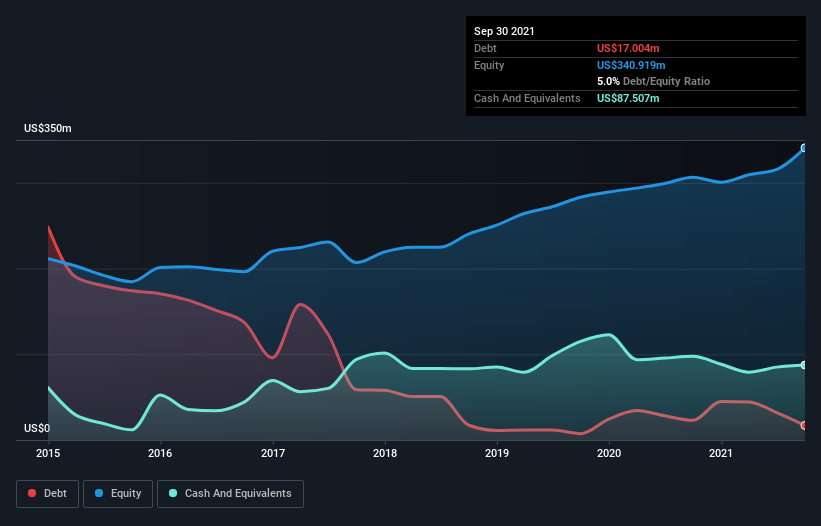Is NACCO Industries (NYSE:NC) Using Debt Sensibly?
David Iben put it well when he said, 'Volatility is not a risk we care about. What we care about is avoiding the permanent loss of capital.' When we think about how risky a company is, we always like to look at its use of debt, since debt overload can lead to ruin. We can see that NACCO Industries, Inc. (NYSE:NC) does use debt in its business. But the real question is whether this debt is making the company risky.
When Is Debt Dangerous?
Generally speaking, debt only becomes a real problem when a company can't easily pay it off, either by raising capital or with its own cash flow. In the worst case scenario, a company can go bankrupt if it cannot pay its creditors. While that is not too common, we often do see indebted companies permanently diluting shareholders because lenders force them to raise capital at a distressed price. Having said that, the most common situation is where a company manages its debt reasonably well - and to its own advantage. The first thing to do when considering how much debt a business uses is to look at its cash and debt together.
See our latest analysis for NACCO Industries
What Is NACCO Industries's Net Debt?
You can click the graphic below for the historical numbers, but it shows that NACCO Industries had US$17.0m of debt in September 2021, down from US$23.0m, one year before. But it also has US$87.5m in cash to offset that, meaning it has US$70.5m net cash.
A Look At NACCO Industries' Liabilities
We can see from the most recent balance sheet that NACCO Industries had liabilities of US$40.9m falling due within a year, and liabilities of US$107.1m due beyond that. On the other hand, it had cash of US$87.5m and US$34.5m worth of receivables due within a year. So its liabilities outweigh the sum of its cash and (near-term) receivables by US$26.0m.
Of course, NACCO Industries has a market capitalization of US$231.6m, so these liabilities are probably manageable. However, we do think it is worth keeping an eye on its balance sheet strength, as it may change over time. While it does have liabilities worth noting, NACCO Industries also has more cash than debt, so we're pretty confident it can manage its debt safely. There's no doubt that we learn most about debt from the balance sheet. But you can't view debt in total isolation; since NACCO Industries will need earnings to service that debt. So if you're keen to discover more about its earnings, it might be worth checking out this graph of its long term earnings trend.
In the last year NACCO Industries wasn't profitable at an EBIT level, but managed to grow its revenue by 25%, to US$166m. With any luck the company will be able to grow its way to profitability.
So How Risky Is NACCO Industries?
Although NACCO Industries had an earnings before interest and tax (EBIT) loss over the last twelve months, it made a statutory profit of US$35m. So taking that on face value, and considering the cash, we don't think its very risky in the near term. One positive is that NACCO Industries is growing revenue apace, which makes it easier to sell a growth story and raise capital if need be. But that doesn't change our opinion that the stock is risky. There's no doubt that we learn most about debt from the balance sheet. However, not all investment risk resides within the balance sheet - far from it. Case in point: We've spotted 2 warning signs for NACCO Industries you should be aware of.
If you're interested in investing in businesses that can grow profits without the burden of debt, then check out this free list of growing businesses that have net cash on the balance sheet.
This article by Simply Wall St is general in nature. We provide commentary based on historical data and analyst forecasts only using an unbiased methodology and our articles are not intended to be financial advice. It does not constitute a recommendation to buy or sell any stock, and does not take account of your objectives, or your financial situation. We aim to bring you long-term focused analysis driven by fundamental data. Note that our analysis may not factor in the latest price-sensitive company announcements or qualitative material. Simply Wall St has no position in any stocks mentioned.
Have feedback on this article? Concerned about the content? Get in touch with us directly. Alternatively, email editorial-team (at) simplywallst.com.

 Yahoo Finance
Yahoo Finance 
